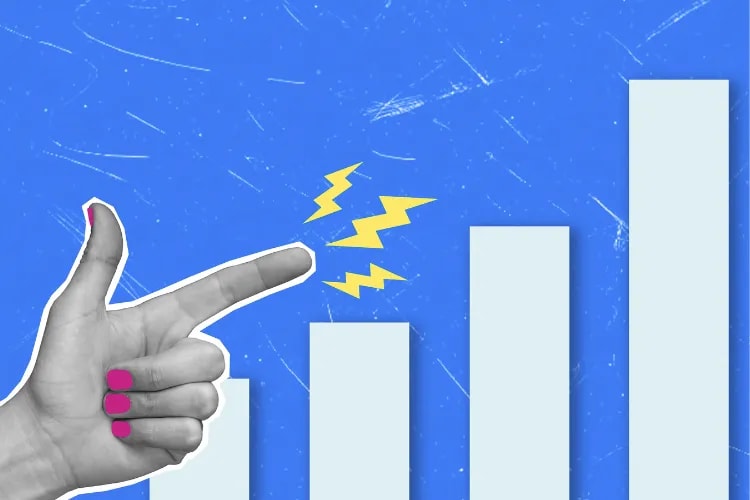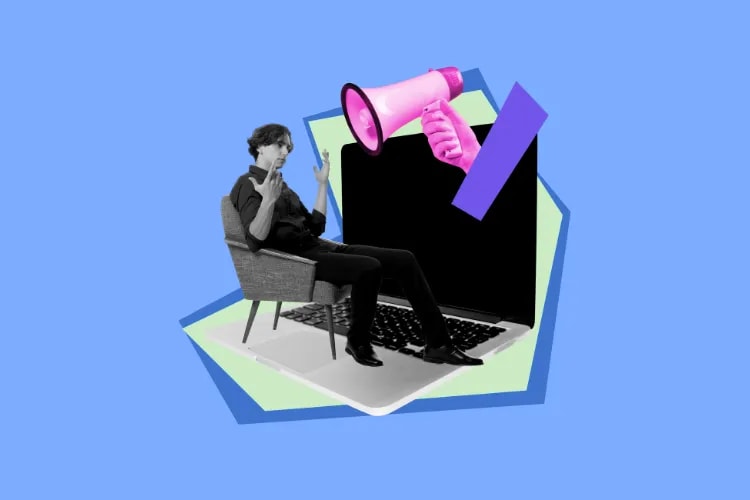
Nail your event ticket pricing and you unlock predictable revenue, healthier margins, and a happier audience. Miss it—by overpricing or underpricing—and you risk empty seats, eroded trust, and money left on the table. Pricing used to be an afterthought; now it’s strategic. Event input costs have shifted in the last two years, and many organizers are looking for smarter ways to set price without scaring off attendees.
The goal of this guide is simple: help you pinpoint whether your tickets are too high, too low, or just right—and give you a field-tested playbook to optimize prices using audience research, cost analysis, competitive benchmarking, value-based tiers, testing, and clear communication.
One more reason to get this right: while certain travel and events categories show signs of stabilization, organizers still face cost headwinds and must protect margins with smarter pricing and clearer value storytelling. Recent industry outlooks indicate that meetings and events costs have seen sustained pressure, with stabilization expected only gradually over 2025–2026. (See GBTA/CWT’s outlook)
Great event ticket pricing starts with people, not spreadsheets. Who is your buyer? What outcomes do they want—learning, status, connection, convenience, fandom? The closer your price gets to the value they expect to receive, the higher your conversion and the healthier your average order value (AOV).
Demographics are a fast track to understanding purchasing power and channels:
Age: Gen Z and millennials often attend more live experiences if the perceived value is strong; older cohorts may prefer comfort and convenience add-ons (reserved seating, short lines).
Income and occupation: Higher disposable income segments can support premium tiers if benefits are obvious (VIP access, exclusive meet-and-greets, content libraries).
Location: Local audiences weigh commute time and convenience; traveling audiences weigh hotels and flights—both impact perceived total cost and price tolerance.

The Loopyah Content Team shares expert insights, practical guides, and industry updates to help event organizers create unforgettable experiences and stay ahead in the event planning world.
marketing
Why people buy matters more than who they are. Common motivations include:
Fandom and exclusivity: Superfans pay for proximity (VIP lounges, early entry, reserved sections).
Purpose and outcomes: Professional events that clearly promise outcomes (new clients, certifications, CPE credits) support higher prices.
Convenience and certainty: Skip-the-line, reserved seating, on-site parking, and concierge support remove friction that many buyers will pay for.
Use a mix of behavioral data, short surveys, and platform insights to estimate willingness to pay (WTP).
Mine past events: Pull attach rates on premium tiers, upgrade percentages, add-on purchases, and heatmaps of sales velocity (which weeks or channels drove conversions). This tells you where value already resonates.
Run a quick pricing study: Two fast, lightweight methods are often enough:
Van Westendorp Price Sensitivity Meter: Ask four questions—at what price is it too expensive, expensive but worth considering, a bargain, and too cheap to be good? The intersection yields an acceptable price range and perceived value thresholds.
Gabor–Granger: Present respondents with sequential price points (e.g., $79, $99, $119, $139) and ask likelihood to buy; this builds a demand curve and identifies revenue-maximizing prices.
Use platform-by-platform polls: Audience habits differ by platform. Younger segments skew toward short-form video and messaging apps; older and professional segments toward Facebook, LinkedIn, and email. Poll where your audience actually spends time to reduce bias.
Want to go deeper on pricing structures once you understand your audience? Read our guide on ticket pricing strategies for real examples and tier templates.
Pricing without a clear grasp of costs is guesswork. Build a bottom-up budget, split into fixed and variable components, then calculate cost per attendee across realistic attendance scenarios.
Fixed costs (don’t change with each additional attendee): venue rental, staging, base A/V, permits, insurance, headline talent deposits, web development, creative/design.
Variable costs (scale with attendees): catering and F&B, staffing hours, badges/merch, registration processing, security per head, swag kits, session materials.
A simple model:
Total fixed costs + (Variable cost per attendee × Expected attendees) = Total costs
Total costs ÷ Expected attendees = Cost per attendee
Example: Suppose a one-day summit for 600 people has fixed costs of $40,000 and variable costs (e.g. acquisition cost) of $18 per attendee. At 600 attendees, total costs are $30,000 + ($18 × 600) = $40,800, or $68 per attendee. If you’re targeting a 35% gross margin, your “blended” average ticket price should land around ~$105 before sponsorships or secondary monetization.
Stress test the math at multiple attendance levels (e.g., 70%, 85%, 100% of capacity). This avoids nasty surprises and keeps your price resilient if a macro shock nudges demand.
That's one way to look at it, that is cost-driven pricing. But in reality, the market dictates what is the right price, often than not. But it's a good exercise to run this simple math first to get an idea.
Note: Industry forecasts note that meetings and events costs per attendee rose across 2024 and are only expected to stabilize gradually through 2026. (Reference: GBTA/CWT outlook)
Now, switching gears to the market-driven pricing approach, one place to start is researching the competition. Your audience compares your price to alternatives—similar experiences, not just direct competitors. Build a lightweight benchmark to see where you stand and how you differ.
Search public registration pages for 5–10 events similar in size, audience, and promise (e.g., “regional SaaS summit,” “indie music festival,” “food & wine festival”). Capture early/standard/late tiers, member vs. non-member prices, and what each tier includes.
Map features vs. tiers: content volume, star power, networking formats, seating or viewing experience, on-demand access, food & beverage inclusions, and concierge perks.
If your price sits above the market, your tiers must make the “why” obvious. Add tangible value—better content, higher production, prime seat maps, VIP lounges, tighter networking—and show it clearly on the pricing page. If you’re below market, make sure you’re not undervaluing the experience or throttling margin needlessly.
Need structured approaches to tier design and positioning? Explore our deep dive on ticket pricing strategies for “good–better–best” frameworks and examples you can copy.
Cost-plus tells you what you need to charge; value-based pricing tells you what your audience will gladly pay. It anchors your price to outcomes buyers truly care about—access, learning, status, convenience—rather than your expense line.
Structure three tiers around distinct outcomes, not arbitrary features:
Good (access): Core experience; fair price; no frills.
Better (comfort/convenience): Add reserved seating or fast lanes, beverage credits, or a lounge.
Best (status/exclusivity): Meet-and-greet, backstage tours, premium seating, hosted networking, or small-group workshops.
Price the experience your buyer values—not merely the cost for you to produce it.
Case example: A 3,000-capacity indie music festival restructured prices from a single GA pass ($149) to three tiers: GA $169, GA+ (express entry, lounge, private restrooms) $239, and VIP (premium viewing, hosted bar hour, artist Q&A) $389. A clear comparison grid and limited VIP quantity drove a 22% VIP attach rate and lifted average revenue per attendee by 31%.
VIP and micro-VIP: Not just one “VIP.” Consider micro-upgrades (express entry, reserved rows, merch bundles) that monetize convenience and status at multiple price points.
Time-bound benefits: Early access to session selection, meet-and-greet lotteries, or seat reservations can justify earlier purchases and higher tiers.
Bundle smartly: Pair GA with a drink voucher or merch credit; for B2B, bundle a workshop or certification. Sell the outcome, not the line items.
Pricing is never “set it and forget it.” Instrument your funnel, test price presentation, and listen to real-time feedback to learn what actually converts.
Another good strategy is to do a presale across a limited group of loyal fans/network. See their uptake and response to the offering. That will give you a nice feel for where you should land with the full price map.
Track impressions → page views → package views → add to cart → begin checkout → purchase. Break down by device, channel, and geography. When you see high add-to-cart but low purchase, it can signal sticker shock, unclear fees, or friction at checkout.
If you’re using Loopyah, combine built-in sales analytics with your GA4 purchase journey to spot drop-offs and attribute revenue by campaign. You can also compare skew across tiers to see whether your anchor is doing its job.
For a broader stack of features that support pricing, packaging, and marketing, explore our event software capabilities and see how analytics, email, and seat map tools work together.
Run controlled tests on real traffic—alternate price displays (e.g., $129 vs. $139), tier names (“Pro” vs. “Plus”), and price framing (monthly equivalent, inclusive value bullets). Keep tests mutually exclusive, bucket users end-to-end, and power them adequately so you avoid false positives.
Example: A 2-day B2B conference tested $449 vs. $479 for the Standard tier alongside a revised comparison grid that highlighted “10 pre-scheduled buyer meetings.” The higher price won with a +6.5% revenue lift and no significant drop in conversion—because value was clearer.
If your conversion stalls even at lower prices, the issue may not be price. Fix messaging, page load speed, social proof, or checkout friction first. Our breakdown of factors that affect ticket sales conversion can help you isolate bottlenecks before you discount unnecessarily.
Ask new buyers one question at checkout: “What nearly stopped you from buying today?” If “price” emerges repeatedly, probe on which tier felt misaligned. Post-event, ask NPS by tier and whether benefits met expectations. Feed those insights back into your next pricing cycle.
When you change prices or introduce new tiers, email is still the most reliable way to explain value and deadlines. For practical templates and timing ideas, check our guide to event email marketing strategy.
Dynamic pricing adjusts price over time based on demand signals, inventory remaining, or seat quality. Done well, it can lift revenue. Done poorly, it can feel like price gouging and hurt trust.
High-demand, limited inventory events: If early demand is strong, modest increases (with clear disclosure) can balance supply and demand.
Seat/section quality: Price should reflect sightlines, proximity, or amenities. Transparent seat maps help buyers self-select without surprises.
Late-cycle sell-through: As the event nears, micro-discounts on specific, undersold sections can improve occupancy without cheapening the entire brand.
Dynamic pricing can raise fairness concerns if changes feel arbitrary. Set guardrails: cap increases, define time windows, and disclose how prices may change. Pair rules with a clear value narrative so buyers understand what they get for higher prices.
A practical model: keep a constant price early to build trust and data; switch to limited, pre-announced windows where prices adjust within a known range; maintain all-in transparency on fees and taxes at every step.
The way you present price can shift choices as much as the number itself. Use these techniques ethically—to clarify value, not to trick buyers.
Ending in .99 or .95 can make a price feel lower; round numbers (e.g., $300) can feel premium and simpler to evaluate. Choose based on your brand and audience: premium B2B might prefer round, consumer festivals often benefit from charm pricing.
Include a high-feature, high-price anchor tier even if few buy it; it reframes mid-tier options as great value. Use a side-by-side comparison grid with bold benefits and “most popular” badges to steer selection. Always show final, all-in prices to minimize friction later.
Frame savings and outcomes clearly: “Save $60 with the Weekend Pass” or “Includes 2 workshops and a certification exam.” In B2B, emphasize ROI (leads, training hours) more than entertainment value.
Even seasoned organizers fall into familiar traps. Steer clear of these:
With 48% of event attendees citing unexpected fees at the end a reason for abandoning ticket purchase, it's become more and more evident that fees transparency is a critical part of the overall pricing strategy to get right.
Ignoring audience feedback: If surveys and support emails say benefits aren’t clear, fix the story before you discount.
Pricing by gut alone: Use a quick Westendorp or Gabor–Granger study to quantify your acceptable range and revenue peak.
Not adjusting to demand: If VIP sells out instantly, you underpriced it (or under-allocated). If GA lags, reframe benefits, add micro-perks, or introduce time-bound incentives.
Hiding fees until checkout: Besides frustrating buyers and killing conversion, fee “drip” is increasingly regulated. In the U.S., an FTC rule requires upfront all-in pricing for live-event tickets. Read the rule and treat transparency as a competitive advantage.
If you need help aligning pricing with broader promotion tactics, our roundup of event marketing tools can help you build a stack that supports testing, analytics, and messaging.
Are you over pricing?
Are you under pricing?
If you see any of the above, revisit your package framing, test new price points, or re-allocate tier quantities. A small, well-explained adjustment often outperforms a heavy discount.
Define your audience segments and outcomes: Who are your 2–3 primary segments and what do they value most (access, learning, networking, status)?
Quantify costs and margin targets: Model cost per attendee at multiple attendance scenarios and set your required blended average ticket price.
Benchmark the market: Collect 5–10 comparable events, map tiers and inclusions, and identify where you can credibly command a premium (or should undercut).
Run a quick pricing study: Field Van Westendorp + Gabor–Granger to capture a price range, acceptable thresholds, and a revenue peak.
Design good–better–best tiers: Tie each tier to an outcome; cap quantities on premium tiers; build a simple comparison grid and seat map if applicable.
Launch with clear value storytelling: In emails and on-site, articulate benefits, quantities, and all-in prices. Use social proof and urgency ethically.
Instrument and test: Track the full funnel, A/B test price displays and tier names, and adjust allocations based on sell-through patterns.
For messaging inspiration across this journey, you may also like our guides on creative event promotion ideas and content marketing for events to boost perceived value without racing to the bottom on price.
Event ticket pricing is both math and message. Start with your audience and costs, validate with quick research, set value-based tiers, and keep learning through instrumentation and testing. Above all, be transparent—clarity on benefits and all-in pricing drives trust and conversions.
If you’d like a platform that supports value-rich packages, analytics, and clear communication, Loopyah is here to help.

marketing









marketing
marketing
tools
planning
selling
growth
marketing
planning
marketing